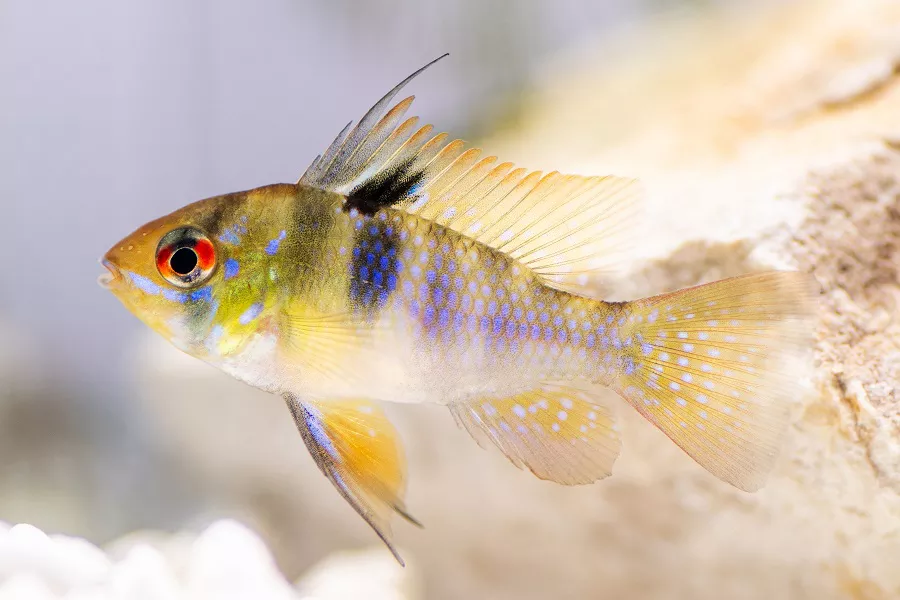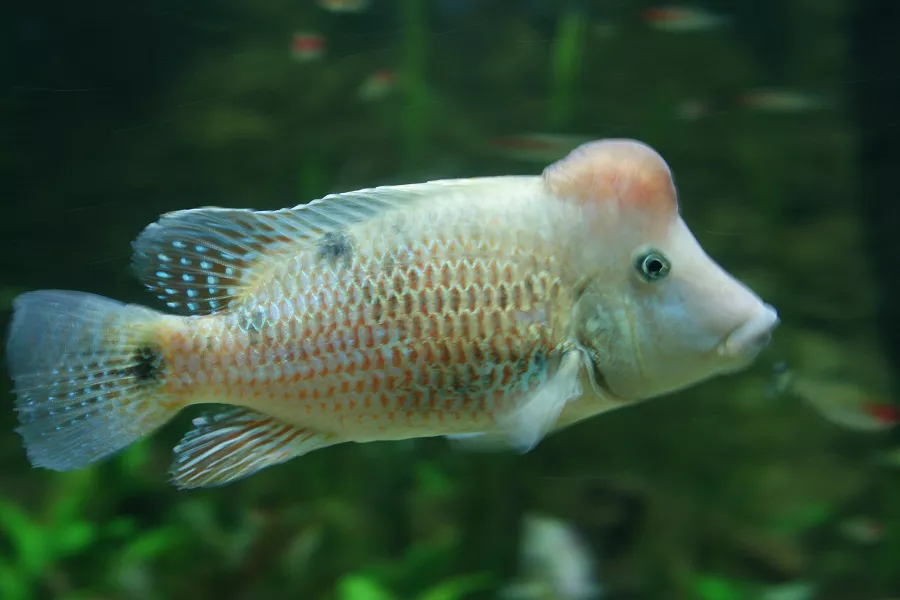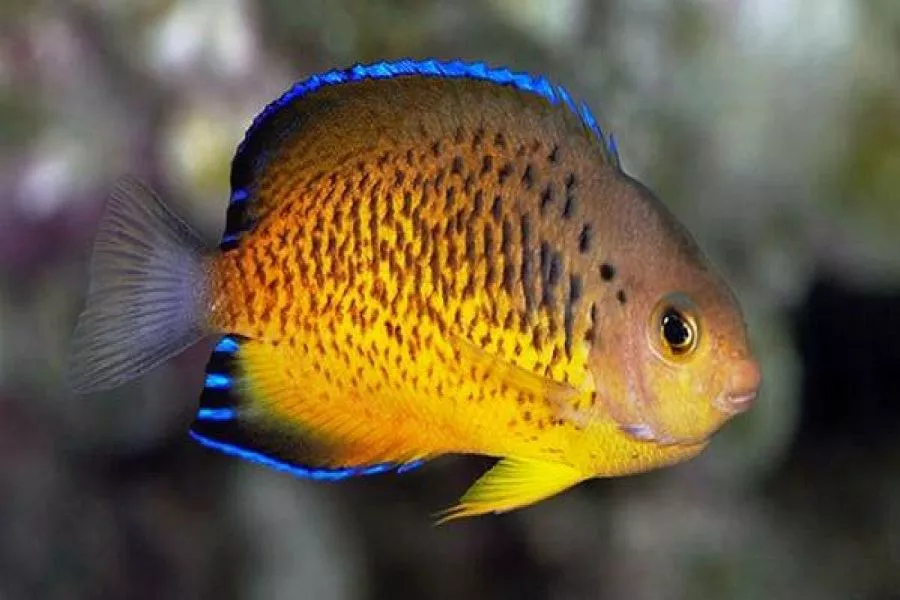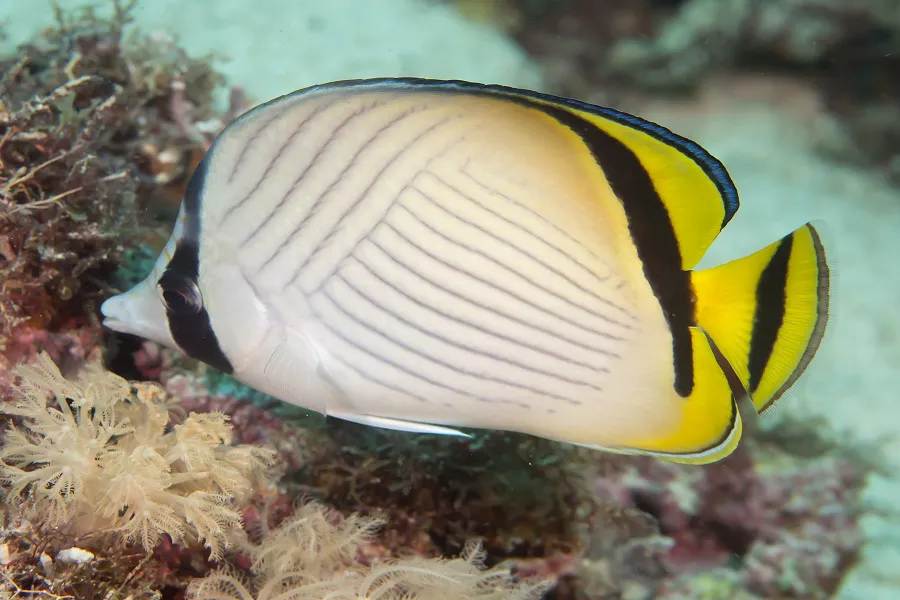What is ram cichlid?
Ram cichlid (scientific name: Mikrogeophagus ramirezi). The colorful phoenix native to the Orinoco River system in Venezuela is called the Dutch phoenix after being improved and bred by Dutch and German breeders. They belong to the same genus as the Bolivian phoenix, but the color is more beautiful. The adult fish is 6-9 cm long and has the same pattern as the medaka family. And sparkle like a jewel. Males have nice red edges on their fins. The dark spots on the back and the red eyes are very beautiful. The four black spines on the male dorsal fin are very beautiful when the male unfolds.
What does ram cichlid look like?
Small cichlids, the representative and entry species of “short cichlids”. The total length is 6-8cm, the body shape is slightly flattened on the side, bright yellow is the basic color, the top of the head and pectoral fins are red, the back of the body and each fin are densely covered with blue-green spots, the whole fish looks very bright and colorful. The anterior edge of the dorsal fin has four black spines. There is little difference between males and females, and males are more colorful.
ram cichlid living habits
Although cichlids are territorial, they can be raised in groups. Weak acid water quality (PH5.5~6.5) is required, neutral water quality can also be adapted, suitable water temperature is 23~27℃, it is active in the middle and lower layers of the water body, and it likes a sandy bottom environment with aquatic plants. In group rearing, the sexually mature individuals pair themselves and leave the group, occupy a relatively safe position as a nest, and use the nest as a place for spawning and breeding. The fry feed on rotifers, paramecia, etc. When they grow up, they feed on other palatable small animals such as cladocerans, insect larvae, water worms, etc., and also feed on artificially made chilled feed and dry feed.
ram cichlid rearing
In artificial breeding, it is better to raise one species alone, and provide enough shelters when the number is large, including aquatic plants, small clay pots, etc. A mixture of silicate river sand and charcoal mud can be laid on the bottom of the fish tank, or the charcoal mud can be placed in the tank in an open container, so that the humic acid can be released slowly and the water quality can be kept weakly acidic. The fish tank is placed in a cool and slightly dark place to prevent the water temperature from being too high in summer. After domesticating it to eat artificial feed, daily management will be easier. A small pneumatic sponge filter is used as a purification facility in the tank, which can avoid frequent water changes.
Mild temperament, small and exquisite, swimming in the aquarium almost all day long. It is easy to raise and can be mixed with other species of fish. During daily feeding, put some pebbles at the bottom of the aquarium to make the water clear. The male fish is long and narrow, lively and active, and the body color is darker; the female fish has a swollen abdomen, swaying and swaying, and the body color is lighter.
Reminder: For more knowledge about tiger fish, arowana, australian lungfish, please pay attention to: mtedr.com, to provide you with types of aquarium fish and fish care.


























